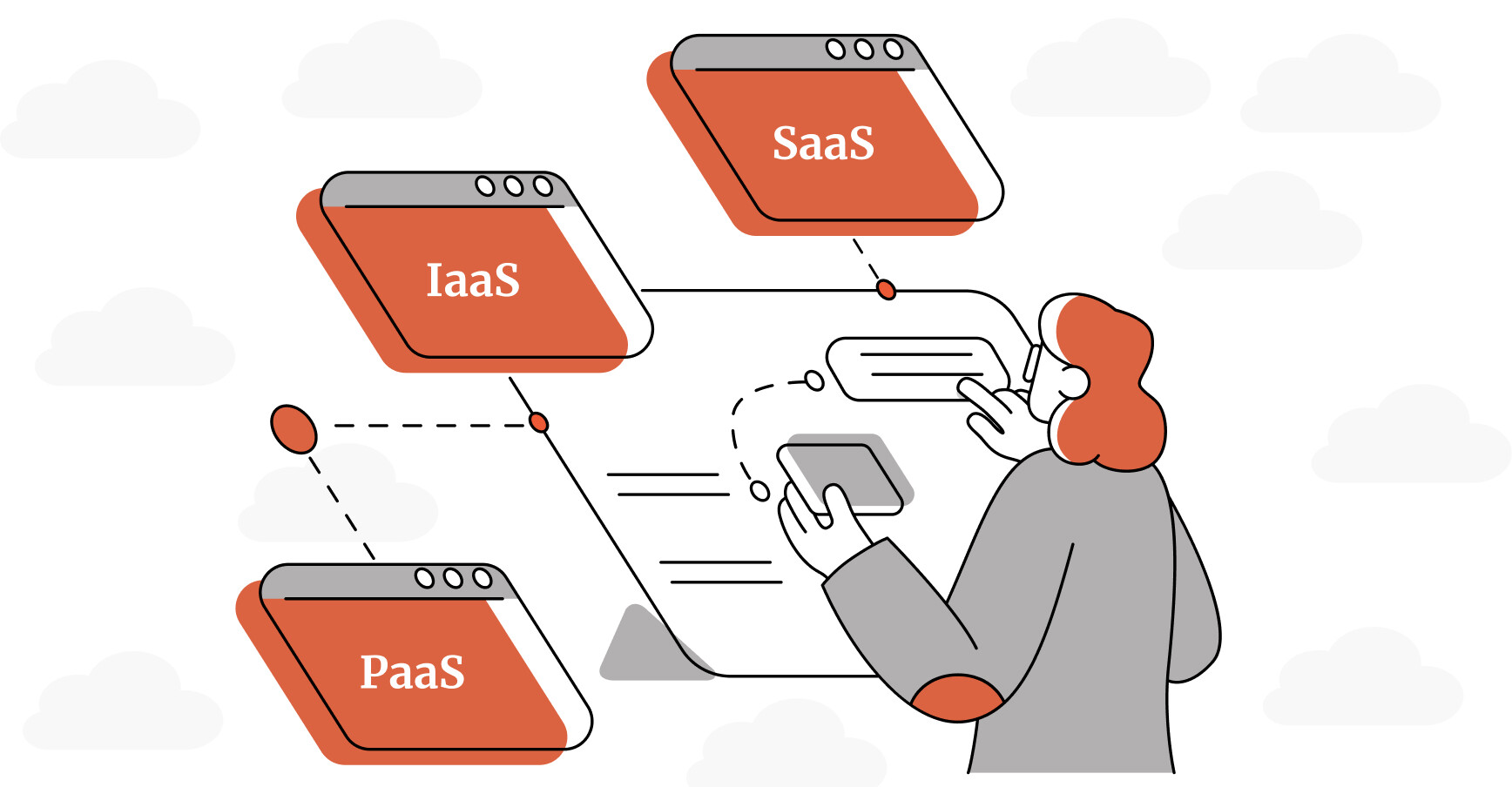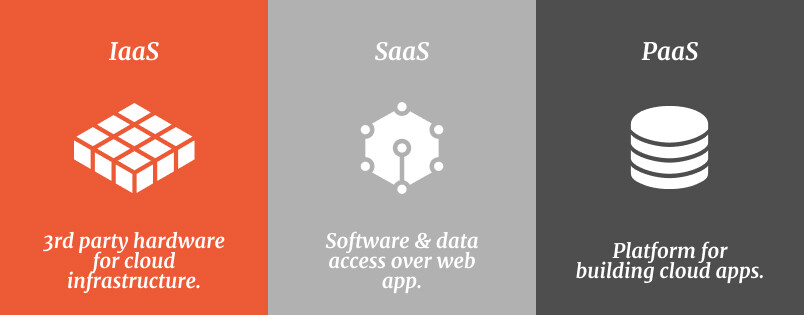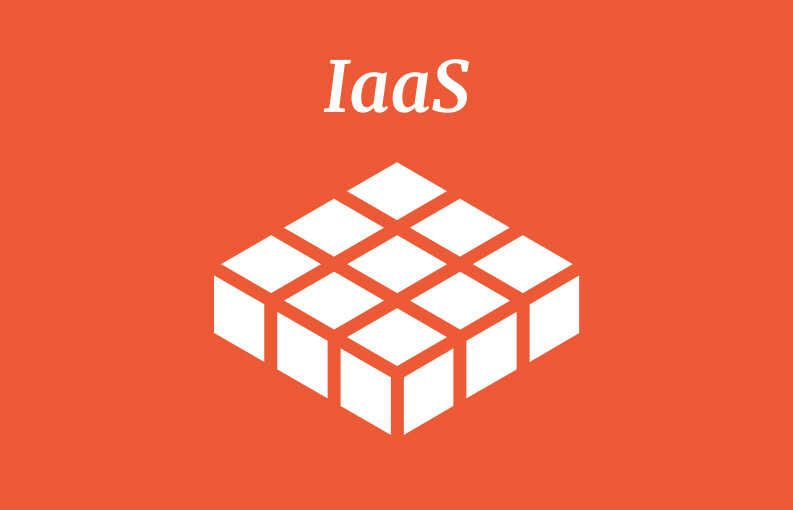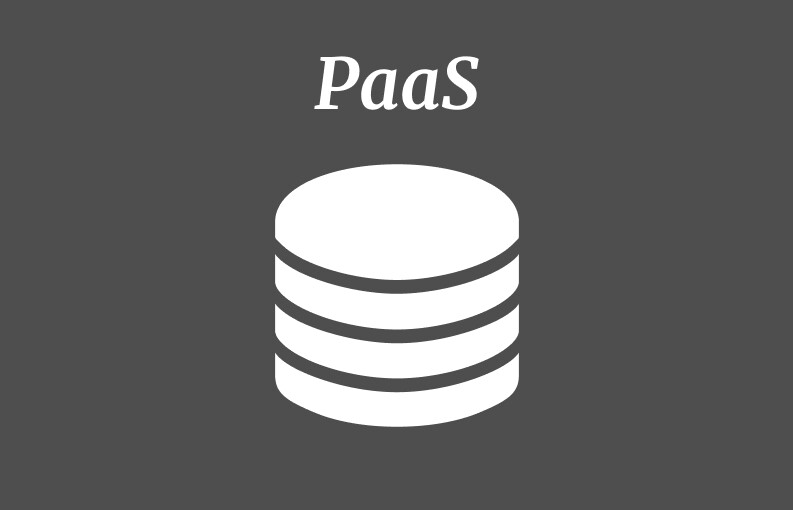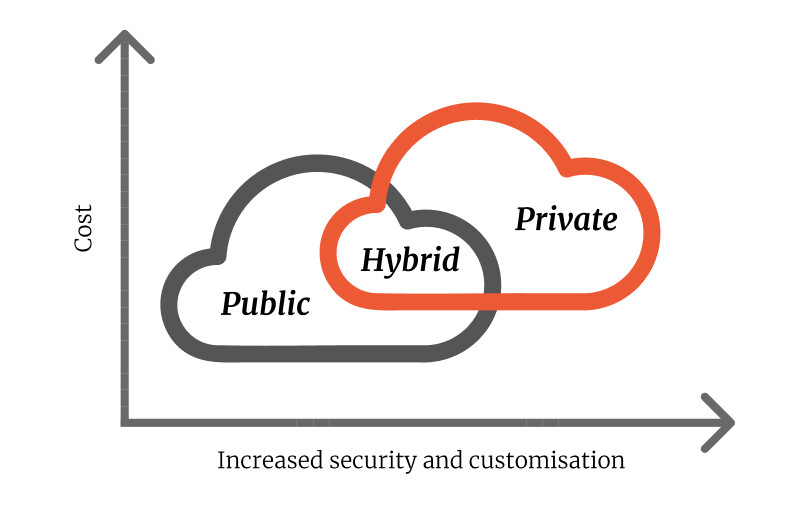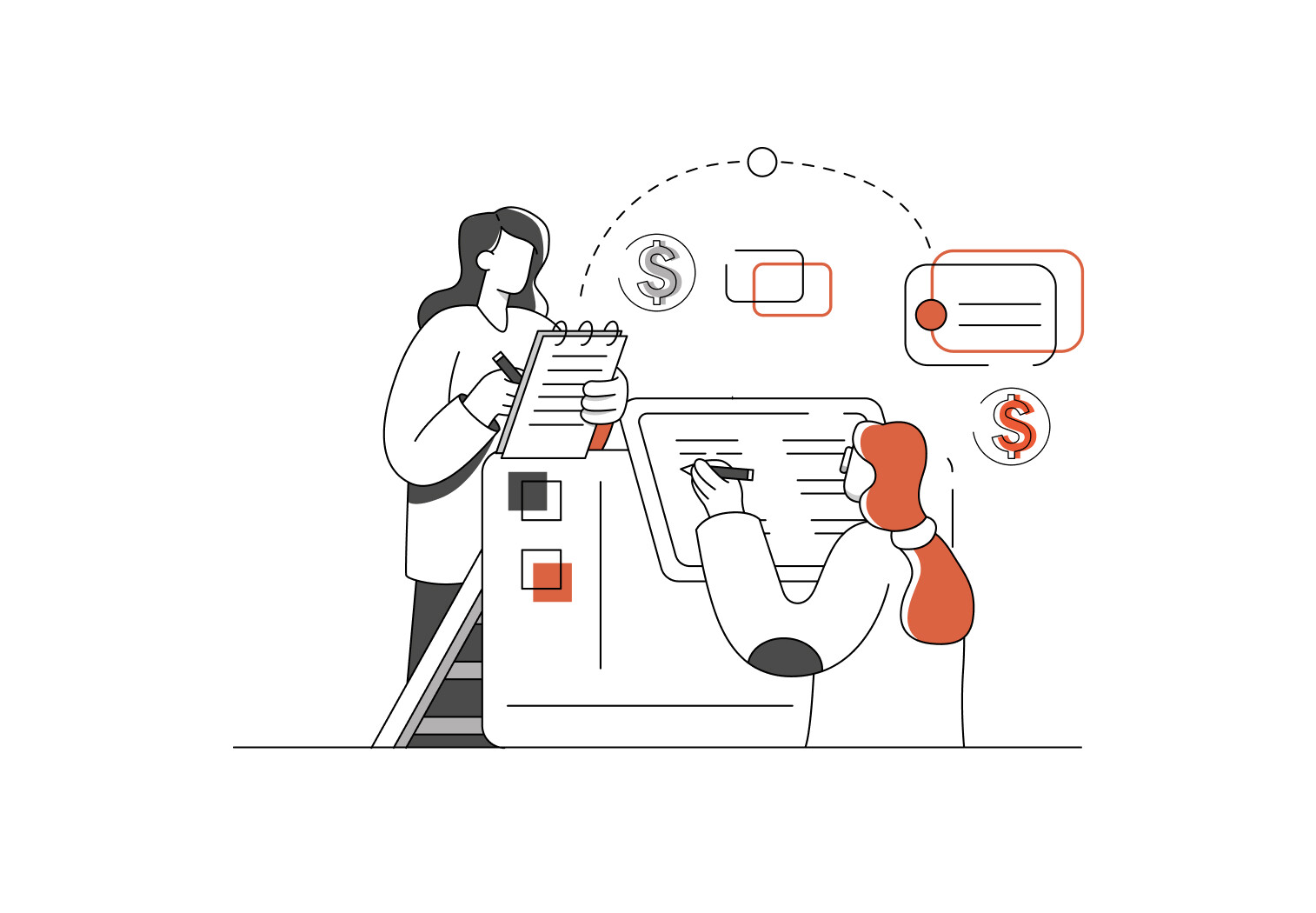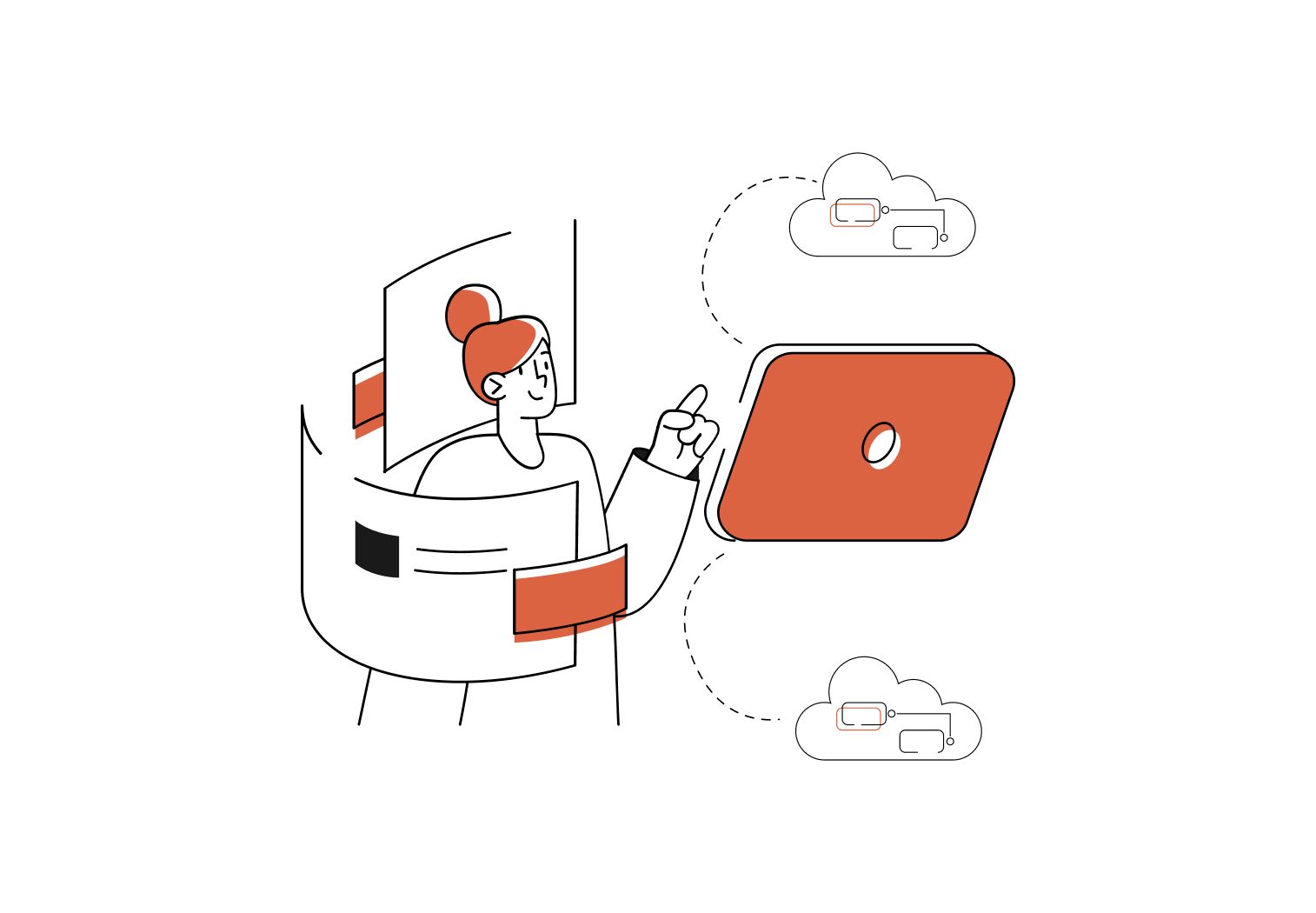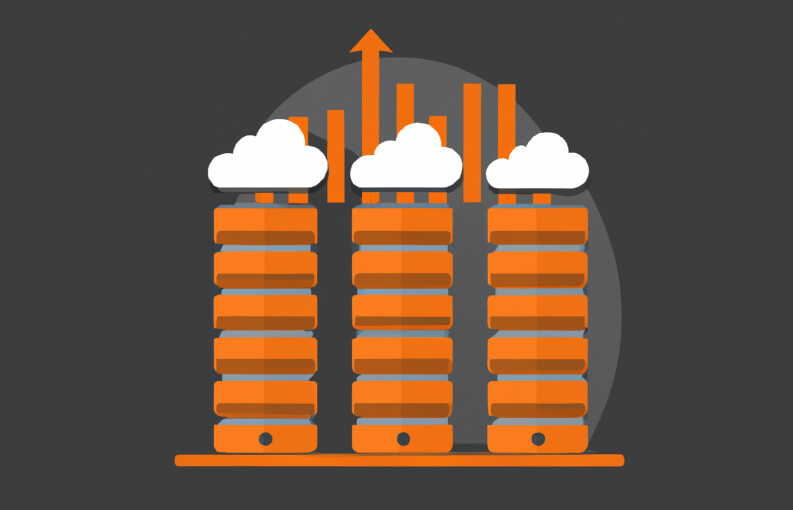In this article
Today, cloud computing is an essential part of business. It empowers companies to be resilient, agile, flexible, and scalable. But knowing which cloud computing model to deploy is the key for a business to get the most out of their experience.
There are three main cloud computing service models that your business is likely to use:
- Infrastructure as a Service (IaaS)
- Platform as a Service (PaaS)
- Software as a Service (SaaS)
According to Gartner, the worldwide end-user spending on public cloud services was projected to grow 20.7% in 2023 to $591.8 billion USD, with IaaS registering the highest growth rate of 29.8%, followed by PaaS at 23.2%, and SaaS at 16.8%.
Driving this adoption are cloud services, backed by some of the world’s largest businesses. The leading cloud service providers in terms of market share were Amazon Web Services (AWS) with around 32%, Microsoft Azure with 23%, and Google Cloud Platform (GCP) with 10% according to Canalys.
In this article we’ll explore these three cloud computing service models, discuss how different models will help you meet different needs, and understand how to choose the right model for your organisation.
What is Infrastructure as a Service?
Infrastructure as a Service (IaaS) is a key pillar of cloud services. Where SaaS provides software, IaaS provides the raw physical infrastructure a business needs to operate, which the business can access in a virtualised capacity. All you need is an internet connection.
The virtual nature of an IaaS cloud deployment model means that businesses don’t have to rely on their own physical infrastructure. So rather than having your services and data storage kept on-site, the infrastructure itself is housed in physical data centres off-site. Your business simply rents it from your provider, freeing up valuable space in your own premises.
As it provides the foundational cloud infrastructure services, you can access to the servers, network equipment, storage capabilities, and more, from anywhere in the world.
How IaaS works
There are three key categories of an IaaS cloud model: compute, storage, and networking.
Compute
A computer IaaS model purely provides the computing infrastructure that users rely on to access their cloud environment—the building blocks for creating, operating, and optimising your cloud environments.
Made up of large collections of CPUs, vast amounts of RAM, and thousands of GB of storage, these physical servers are housed in data centres, which can then be partitioned to create virtual machines. Your business then utilises these virtual machines to run your own operating systems and software independently.
An IaaS cloud model is made to be highly scalable. So when your IaaS cloud provider then identifies that you need more space or processing power, your organisation can add more virtual machines to your environment.
It’s an ultra flexible solution that enables your business to access the computing power, storage, and environment it needs to scale, without necessarily purchasing the physical infrastructure yourself.
Storage
There are three types of storage in an IaaS cloud model.
File storage
The simplest of the three, which allows users to store data as files.
Block storage
This storage solution enables you to access a block storage device over your network, like a hard drive or SSD, and connect it to your virtual machines. You then save blocks of data directly to these devices, providing a faster way to save and transfer.
Object storage
Object storage allows you to store whole objects as data—so things like data logs and image files, or similar—and do so in a way that attaches rich metadata to it, allowing it to be quickly and easily identified.
Object storage typically uses commodity hardware, meaning you take advantage of large amounts of computing power from distributed sources. The highly distributed nature of it is a big bonus, meaning your data storage is more resilient. When using object storage, you get performance capabilities and speeds that are potentially infinitely scalable.
Networking
The networking element of an IaaS cloud model covers the traditional networking hardware resources your business needs, like the routers and virtual machines, that store and transfer information through the architecture, and allows you to virtualise these network functions.
Depending on your data usage and needs, your IaaS computing resources provider can ensure you get the right bandwidth for your needs.
Benefits of IaaS
Scale with ease
One of the biggest advantages of utilising an IaaS solution is its scalability. IaaS cloud providers create hardware configurations for your business, which can be added to or reduced as needed.
Your own business processes, operating systems, platforms, and applications are available in a bespoke cloud computing environment, all ready to use. Your end user doesn’t have to do a thing.
Save money and space
Employing an IaaS cloud service saves you money, both in the short and long term. Rather than spending big to buy, install, monitor, and manage your own infrastructure resources, your business’ cloud based services provider takes care of this for you in one combined fee.
You don’t have to pay for an in-house expert, team training, or server upkeep and maintenance—it’s all included. You only ever pay for the cloud resources you use, too. So if your needs reduce, you only pay for the actual utilisation of their hosting infrastructure.
Easier digital management
IaaS makes the management of your digital environment easier. It’s undertaken by an expert team, rather than an in-house IT resource that’s being pulled in multiple directions.
In fact, it reduces the on-site need for an infrastructure expert to practically zero: all you need is the relationship owner with the IaaS provider, and they do the rest.
You get a better service
Your cloud provider will typically have a service level agreement in place. This means that you’re guaranteed to get a higher standard of service from their cloud servers than what you generally would from your own premises.
Disadvantages of IaaS
- While IaaS data centers are extremely secure, your business is responsible for its own data security and data recovery. So it’s crucial that you have these protocols in place before choosing your IaaS cloud provider.
- If you’re running legacy systems and applications, some of these may not be compatible with cloud computing services, and could require replacing.
- There’s more work involved from your end. Your IaaS provider gives you the infrastructure and API, but it’s up to your developers to set up the rest.
What is Platform as a Service?
Where an IaaS cloud deployment model provides the infrastructure for cloud computing, Platform as a Service goes that one step further.
PaaS is typically used in the development world. Under a PaaS model cloud deployment model, your service provider supplies not only the managed cloud infrastructure that underpins the whole process, but the software and the virtualization layer technology too. This includes things like operating systems, database management tools, middleware, and development tools. It also provides the graphic user interface that allows the users’ DevOps to actually undertake the software development process.
This provides your business with everything it needs to build and deploy applications from scratch, without having to worry about updating software or operating systems, manage licences, or ensure your hardware is maintained
Most of the leading cloud providers offer a PaaS platform solution. AWS have AWS Elastic Beanstalk, Google Cloud has Google App Engine and Cloud Run, IBM have IBM Cloud, and Microsoft Azure has their Microsoft Azure App Service. Red Hat OpenShift and Salesforce’s PaaS offering, Heroku, also provide popular options for developers.
Where a PaaS cloud model can be used
A PaaS cloud deployment model makes it simpler and more secure for businesses to develop and run their own APIs. The infrastructure supports a wide range of different programming languages, applications, and tools, effectively providing an entire development platform for businesses to use, straight out of the box. All the backend management is handled—your business can focus purely on developing.
With its focus on development, it means that the majority of businesses likely won’t need to explore a PaaS solution. But it can be a versatile solution to support different areas of business.
A PaaS cloud service can be a useful tool for developing IoT applications. The entire infrastructure is built to handle high volumes of data, with the capacity and speed to support the sheer scale of data generated from IoT enabled devices.
PaaS allows for high performance computing, ideal for situations where a business is analysing large volumes of data. It enables organisations to leverage the vast computational power of an IaaS solution without having to manage the infrastructure itself.
This also makes it ideal for big data analytics. Businesses can take advantage of the data warehousing technology of their PaaS provider to store massive volumes of data, with the associated tools to manage and analyse the data for business intelligence and insight.
Benefits of PaaS
Flexible and scalable
The cloud nature of PaaS means that a developer isn’t tethered to one single geographical location. With their new environment, they can access their work from anywhere. And as your infrastructure is effectively virtual, too, it means that as your business capacity grows or decreases, the PaaS provider manages your infrastructure and software needs for you.
Improved reliability
PaaS platforms are inherently reliable. This allows businesses to meet traffic spikes with ease, with no need to worry that their infrastructure isn’t up to the task.
A faster and easier way to power development
The plug-and-play nature of PaaS means that there’s a lowered barrier to entry, and is a powerful cloud computing model for businesses that have development needs, but don’t have the space, money, or time to deploy an on-premises solution themselves.
A PaaS cloud deployment model provides the business and its end users with a suite of tools that are ready to use, backed up with the right infrastructure, using a GUI that they can understand. Businesses can employ a PaaS cloud or hybrid cloud service to get started on their development quicker, speeding up time-to-market.
One complete environment
A PaaS cloud service provides one complete environment, from beginning to end. Businesses can build their applications, test them, check for bugs, and deploy them all in the same continuous environment.
This enables developers to perfect their web applications before being released, ensuring it can function properly when hosted.
A more cost-effective solution
For developers, a PaaS solution can be more cost-effective than IaaS cloud services. Businesses don’t need to procure, provision, or maintain the virtualization technology or machines, it’s all done for them. Under the pay-as-you-go pricing structures, you’re only charged for the resources that you use. You don’t need to pay for your own storage, power, or to hire staff to manage both the infrastructure and the software.
Under one general flat fee, your PaaS cloud services provider takes care of the licensing for the tools, operating systems, and other software that you’ll use.
Disadvantages of PaaS
- Similar to IaaS, a PaaS cloud service solution can encounter challenges with legacy systems that aren’t built for the cloud.
- While your PaaS providers’ servers are robust, you’re still using third-party servers, which provides an added level of data security risk.
- You don’t have control over the underlying infrastructure, meaning your business only controls the code in the apps that you build.
- In some instances, your PaaS cloud deployment model may not support the programming language that you use. This can lead to runtime issues. So be sure to check the compatibility of your platforms before engaging a PaaS provider.
What is Software as a Service?
Software as a Service is the most widely known cloud computing model. An independent software vendor provides organisations with access to their software via the internet, without the need to install the software on their servers, maintain any hardware, or deal with any data centers. Users can access their software in a cloud environment, from anywhere in the world.
SaaS essentially covers any and all types of software available this way. SaaS apps can include anything, from accounting and financial tools, to data management software, supply chain and procurement platforms, CRM and HRM software, and communication tools.
These are generally accessed on a pay-as-you-go or subscription basis. Your SaaS software provider supplies all the infrastructure, hardware, middleware, data security systems, and the software for the application itself—a small price to pay for the SaaS provider to manage the entire process.
How SaaS works
Unbeknownst to many, a SaaS service provider typically takes a multi-tenant approach to their hosting. Under this model, the cloud vendor will have one instance of the SaaS application running on their servers, which then serves each subscribing customer. The customers, or tenants, each use the same resources and infrastructure, but their sensitive data is segregated, so it’s still safe and secure.
This multi-tenant approach provides SaaS services providers a faster and easier way to manage any necessary maintenance, software updates, and catch and fix any bugs.
It’s the same service model that community cloud services follow. Individual customers all use the same infrastructure, while still ensuring their data remains separate. This allows for a greater wealth of businesses resources to be available to the community cloud software subscribers, without sacrificing security or speed.
Benefits of SaaS
Exceptional convenience
Barring any training time, businesses can start using the software as soon as they receive their subscriptions. There’s nothing to install, and no support to set up first. This low barrier to entry makes it an attractive option. Self-provisioning also allows businesses to add extra users as they need, rather than having an IT resource come and set up new user credentials for them.
Saves money and space
SaaS eliminates the need for organisations to purchase and maintain costly hardware, software, and infrastructure. Instead, businesses pay a subscription fee to access the software. This makes it easier for budgeting and planning purposes.
It also reduces the capital expenditure of companies and makes software accessible to smaller organisations that may not have the resources to invest in IT infrastructure.
Saves time
SaaS providers handle software patching, updates, and maintenance, ensuring that businesses are always using the latest version of the software. This eliminates the need for businesses to perform updates themselves, which can be time-consuming and disruptive.
Disadvantages of SaaS
- One of the biggest SaaS disadvantages is that by choosing a SaaS platform, you’re essentially locked in to that vendor. It can be difficult to transfer data from one SaaS platform to another, with complex processes and potential high costs involved.
- There’s a distinct lack of control over the infrastructure your provider uses. If their servers go down, your software goes down too.
- SaaS deployment models are hosted on the cloud, meaning you’re open to more data security threats.
- SaaS products are generally plug-and-play, ready to go without the need for customisation. So any customisations you do need for your business may not be possible, or could come at a cost.
Private cloud Vs public cloud deployment
In the context of IaaS (Infrastructure as a Service), PaaS (Platform as a Service), and SaaS (Software as a Service) cloud computing models, each has the flexibility to utilise different deployment models, each with their own pros and cons relative to the specific needs of the organisation.
IaaS (Infrastructure as a Service):
Private Cloud
In a private IaaS model, organisations set up, manage, and maintain their own infrastructure, including servers, storage, and networking components. This allows for greater control and customisation but requires significant resources and expertise in managing the infrastructure.
Public Cloud
In a public IaaS model, organisations consume infrastructure resources provided by a third-party public cloud service provider. This offers scalability, flexibility, and cost savings, as customers pay only for the resources they use. Examples include Amazon EC2, Google Compute Engine, and Microsoft Azure Virtual Machines.
PaaS (Platform as a Service):
Private Cloud
In a private PaaS model, organisations deploy and manage their own platform services, providing a development and runtime environment for applications. This model allows for greater control over the environment, but it requires more resources and expertise to maintain and support.
Public Cloud
In a public PaaS model, organisations use a third-party provider’s platform services to develop, deploy, and manage applications. This eliminates the need to manage underlying infrastructure, allowing developers to focus on building and deploying applications more efficiently. Examples include Google App Engine, Microsoft Azure App Service, and Heroku.
SaaS (Software as a Service):
Private Cloud
In a private SaaS model, organisations host and manage their own software applications on their private cloud infrastructure. This allows for greater control over data, security, and customisation but requires more resources for maintenance and support.
Public Cloud
In a public SaaS model, organisations access software applications provided by a third-party cloud service provider. These applications run on the provider’s infrastructure and can be accessed through a web browser, with no need for installation or management by the customer. Examples include Salesforce, Microsoft Office 365, and Google Workspace.
The choice between private and public cloud depends on an organisation’s specific requirements, such as control, the security risks, compliance, scalability and cost.
Each cloud computing model (IaaS, PaaS, and SaaS) can be deployed on both private clouds and public cloud infrastructure, with varying degrees of control, customisation and resource requirements. Some organisations may also opt for a hybrid cloud or multi-cloud approach, which combines aspects of both private cloud and public cloud models to meet their unique needs.
How to choose between IaaS, PaaS, and SaaS
Ultimately, choosing between these three cloud deployment models all depends on your application requirements, your end users, and what you want to achieve.
Choosing IaaS
If your business is after more computing capacity, more storage capacity and space, and the speed and flexibility to scale at will—while at the same time reducing the need for any on-premises infrastructure hosting—but still being in control of your operating systems and applications, then IaaS deployment models will be your port of call.
Choosing PaaS
If you’re in the development space, and are looking for a powerful cloud service designed specifically for creating and deploying software applications, while all your infrastructure management and system administration is taken care of for you, then look into a PaaS solution.
Choosing SaaS
If you’re looking for a cloud computing solution where absolutely everything is done for you, where you get out-of-the-box ease-of-use, without any legacy applications either to install or updates to undertake, then you should explore a SaaS solution.
Supercharge your business with the right cloud deployment models
TechBrain provides flexible, highly scalable, and secure cloud computing services in Perth. Get in touch with us for a free consultation, where we can discuss a tailored cloud service solution that supports your business to grow.
